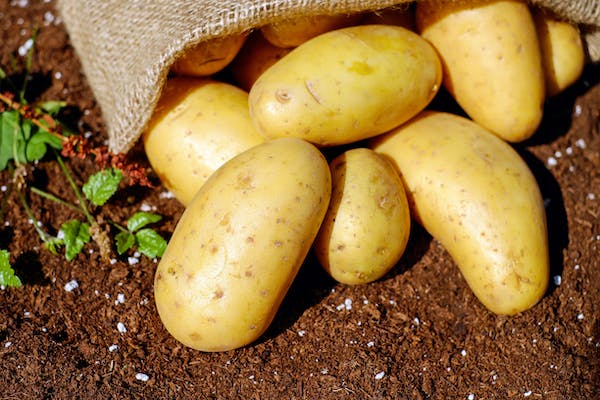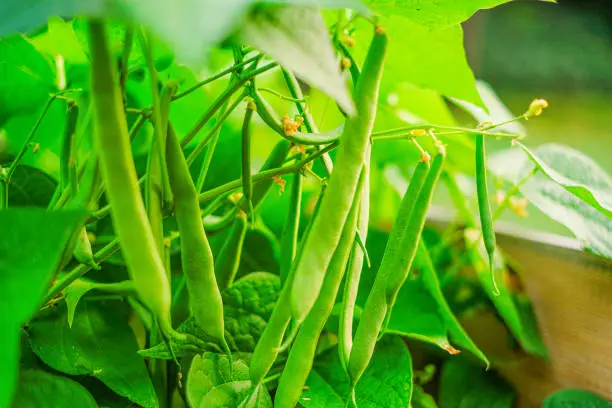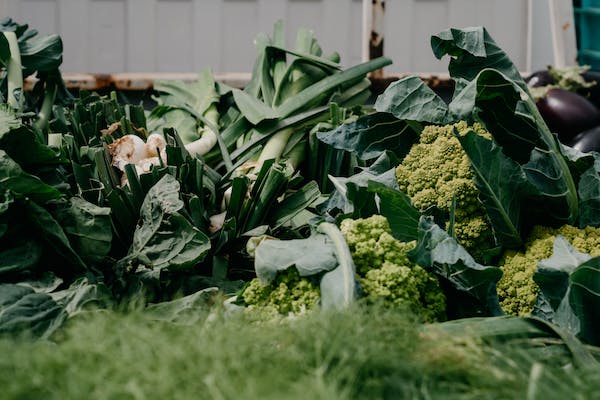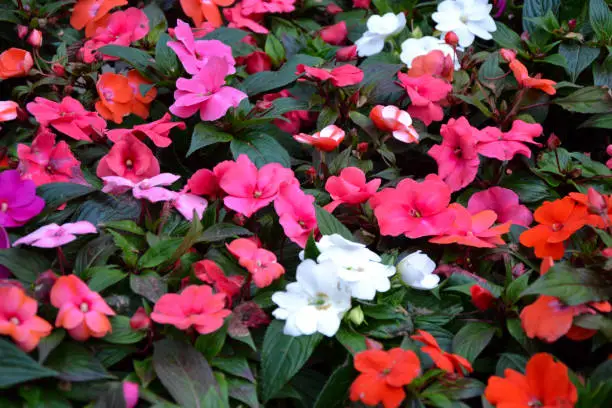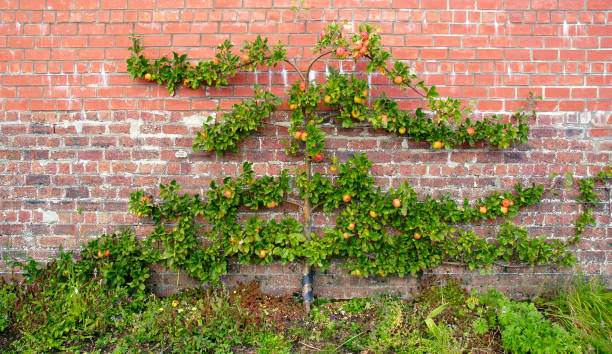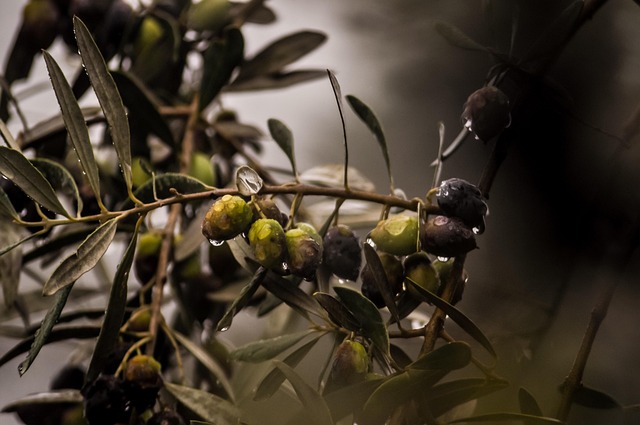When to harvest potatoes UK | Earlies, Second Earlies and Main crop 3 best crops
From creamy Yukon Golds to the waxy bliss of New Potatoes, the UK’s potato patch offers a spectrum of flavours.
As July and August dawn, it’s time to reach into the soil’s embrace and harvest these earthy gems. Each type, a culinary canvas, awaits your creative touch in the kitchen. Summer’s bounty is right at your fingertips.
When to harvest potatoes UK | Earlies, Second Earlies and Main crop
As the golden sun stretches its warm embrace over the lush British countryside, July and August unveil a tantalizing secret hidden beneath the earth’s surface: the perfect time to unearth the treasures of the UK’s potato fields.
These summer months, adorned with vibrant blooms and kissed by gentle breezes, herald the culmination of months of patient cultivation.
The heart of Britain’s potato harvest season, where the art of timing meets the earthy delights of potatoes, promising a bounty that embodies the essence of summertime in the United Kingdom.

First Earlies
Plant these potatoes in spring, and by June and July, you’ll be savouring the scrumptious rewards of your labour. First Earlies bring a burst of freshness to your table with their tender skins and creamy insides, perfect for salads and boiling.
Second Earlies
Welcome the sunny days of July with a bountiful harvest of Second Earlies. These spuds are the epitome of midsummer flavour, boasting a versatile texture that’s great for roasting, mashing, or frying. Enjoy the taste of the season!
Main Crop
As August turns to October, it’s time for the grand finale Main Crop potatoes! These sturdy taters are the backbone of hearty meals. Whether you’re craving comforting mashed potatoes, crispy chips, or robust stews, Main Crop Potatoes have got you covered. Harvest the taste of fall!
Where to buy seed potatoes online?
You can buy seed potatoes online from various reputable sources. Here are some popular options:
Amazon:
Amazon offers a wide range of seed potato varieties from different sellers. You can read reviews and compare prices to make an informed choice.
Burpee:
Burpee is a well-known online gardening store that sells high-quality seed potatoes. They offer a variety of options and often provide detailed information about each potato type.
Gurney’s:
Gurney’s is another established online seed and plant supplier. They offer a selection of seed potatoes suitable for various growing conditions.
Local Nurseries’ Websites:
Many local nurseries and garden centers have online stores where you can purchase seed potatoes. Check if your favourite local nursery offers this option.
Specialized Potato Retailers:
Some online retailers specialize in potatoes and potato-related products. These specialized stores may offer unique potato varieties and expertise.
First Early Potatoes:
First early potatoes are a category of potatoes known for their early maturity and tenderness. They are typically the first to be harvested in the growing season, making them a popular choice among gardeners and home growers.
Duration:
First early potatoes should be planted in early spring, usually from late February to April, depending on your local climate. They thrive in well-drained, fertile soil and require good exposure to sunlight. Plant them in rows or containers, ensuring proper spacing.
Harvest:
First early potatoes are ready for harvesting approximately 10 to 12 weeks after planting. You’ll know they’re ready when the plants are in full flower, and the tubers are small and tender. Gently dig them up with a fork to avoid damaging the delicate skin.
Recommended Varieties:
Rocket:
Rocket potatoes are a classic first early variety known for their exceptional flavour and waxy texture. They’re great for boiling and making salads.
Swift:
Swift potatoes are one of the earliest varieties, perfect for those eager to enjoy fresh homegrown potatoes. They have a creamy texture and are excellent for boiling or steaming.
Lady Christl:
Lady Christl potatoes are prized for their uniform, small size and rich flavour. They’re ideal for boiling and taste delicious in salads.
Arran Pilot:
This heritage variety has a fantastic flavour and a firm, waxy texture. It’s excellent for boiling and makes superb new potatoes.
Second Early Potatoes:
Second early potatoes are a type of potato known for their slightly later maturity compared to first earlies but still early in the growing season. They are prized for their versatile culinary uses and excellent flavour.
Duration:
Second early potatoes are typically planted in late winter to early spring and harvested in early to mid-summer, around 13-16 weeks after planting.
Planted:
Plant second early potatoes in well-drained, fertile soil with good sun exposure. The planting depth should be about 3-4 inches, and spacing between rows and plants is essential to ensure healthy growth.
Harvest:
You can start harvesting second early potatoes when the plants are in bloom and the tubers are small to medium-sized. Carefully dig them up to avoid damaging the skin, usually 13-16 weeks after planting.
Recommended Varieties:
Charlotte:
Charlotte potatoes are a popular second-early variety known for their firm, waxy texture and delicious flavour, making them excellent for salads.
Maris Peer:
Maris Peer potatoes have a creamy texture and are versatile for boiling, steaming, or mashing. They offer a rich, buttery taste.
Kestrel:
Kestrel potatoes have a unique purple skin and creamy flesh. They’re great for roasting, baking, or mashing, and their flavour is exceptional.
Wilja:
Wilja potatoes are prized for their good yields and versatility. They work well for boiling, roasting, or making chips.
Jazzy:
Jazzy is a newer variety known for its small, uniform tubers. These are perfect for boiling or steaming and make delectable, tender new potatoes.
Main Crop Potatoes:
Main crop potatoes are a category of potatoes known for their late maturity and suitability for long storage. They are typically grown for larger yields and are a staple in many households for various culinary purposes.
Duration:
Main crop potatoes are usually planted in early spring and harvested in late summer to early autumn, approximately 18-20 weeks after planting. They have a longer growing period compared to early varieties.
Planted:
Plant main crop potatoes in well-prepared, fertile soil with good drainage. They require a bit more space between rows and plants compared to early potatoes. Plant them in early spring, usually around March or April, depending on your local climate.
Harvested:
Main crop potatoes are ready for harvesting when the foliage begins to yellow and die back, typically in late summer to early autumn. Use a fork to carefully dig them up from the soil to avoid damaging the skin.
Recommended Varieties:
King Edward:
King Edward potatoes are a classic main crop variety known for their floury texture and delicious taste. They’re excellent for roasting, mashing, and making fluffy baked potatoes.
Maris Piper:
Maris Piper potatoes are versatile and widely used for making chips (fries), but they also work well for mashing and roasting. They have a fluffy texture.
Desiree:
Desiree potatoes have red skin and creamy flesh. They are ideal for boiling, baking, and making creamy mashed potatoes.
Cara:
Cara potatoes are known for their excellent disease resistance. They have a waxy texture and are great for boiling, baking, or making potato salads.
Salad Potatoes:
Salad potatoes are a specific type of potato variety chosen for their waxy texture, thin skin, and excellent taste when used in salads. They are typically harvested early in the growing season when the potatoes are small and tender.
Salad potatoes have several key characteristics:
Waxy Texture:
They have a waxy, smooth texture that holds its shape well when cooked, making them ideal for salads.
Thin Skin:
Salad potatoes often have thin, delicate skins that do not require peeling, adding to their convenience.
Small Size:
They are harvested when relatively small in size, usually referred to as “new potatoes,” which are perfect for slicing or halving in salads.
Flavor:
Salad potatoes are known for their sweet, nutty, or earthy flavours, enhancing the taste of salads.
Harvest:
Salad potatoes are ready for harvest when the plants start flowering, usually 10-12 weeks after planting. You can gently dig them up from the soil, and their small size and tender skins make them perfect for immediate use in salads.
FAQs about : When to harvest potatoes UK | Earlies, Second Earlies and Main crop
When is the best time to harvest potatoes in the UK?
The ideal time to harvest potatoes in the UK is generally in July and August. However, specific timing can vary depending on the potato variety and local weather conditions.
How do I know if my potatoes are ready for harvest?
You can tell if potatoes are ready for harvest when the plant’s foliage begins to yellow and die back. Gently dig around the soil near the plant, and if you find mature-sized potatoes, it’s time to harvest.
Can I harvest potatoes earlier than July or August?
Yes, you can harvest “new potatoes” earlier, typically from late spring to early summer. These are smaller, tender potatoes with thin skins and a delicate flavour.
What’s the risk of harvesting too late?
If you wait too long to harvest, potatoes may develop thicker skins, and their flavour might change. They can also be susceptible to pests and diseases if left in the ground for too long.
Should I wait for the first frost to harvest my potatoes?
No, it’s generally recommended to harvest potatoes before the first frost, as freezing temperatures can damage them. Harvesting before frost ensures better quality and storage.
How should I store harvested potatoes?
After harvesting, let the potatoes cure for a few days in a cool, dark, and well-ventilated place. Then store them in a cool, dry, and dark location like a cellar or pantry. Avoid storing them in the refrigerator.
Can I leave some potatoes in the ground for winter?
While some gardeners do leave a few potatoes in the ground for the winter, it’s important to ensure they are adequately protected from freezing temperatures to prevent damage.
What should I do if my potatoes have green spots or sprouts when harvested?
Green spots or sprouts on potatoes indicate exposure to light. Cut away the green parts before cooking, as they can contain solanine, a naturally occurring toxin.
How long can I store harvested potatoes?
When stored properly, potatoes can last for several months. However, their shelf life depends on the storage conditions, so it’s essential to regularly check for signs of spoilage.
Can I harvest potatoes during rainy weather?
While it’s possible to harvest in light rain, it’s best to wait for a dry day if possible. Harvesting in wet conditions can make the potatoes susceptible to diseases and may result in muddy, difficult-to-store tubers.
Conclusion:
In the United Kingdom, the art of potato harvesting is a celebration of nature’s rhythm and a testament to the farmer’s patience. As the summer sun bathes the fields in a warm glow, July and August stand as the appointed months to pluck these subterranean treasures from their earthly abode.
Whether you’re a seasoned gardener or a culinary enthusiast, these months bring forth a delicious promise – the promise of potatoes at their peak, ready to grace your table with their unmatched flavour and versatility.
So, as the calendar turns, embrace the season, gather your spade, and savour the satisfaction of harvesting potatoes in the heart of British summer
